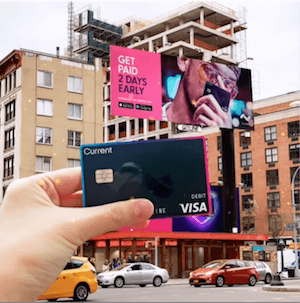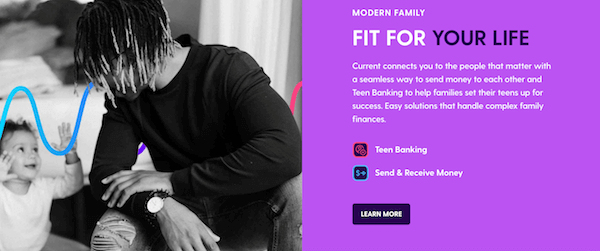
When it comes to saving money and striving towards financial independence, impulse spending habits are some of the biggest obstacles preventing you from achieving your goals. Impulse shopping problems typically start out small: $5 purchases here and there. But then they progress into more frequent and costly purchases, as we grow increasingly desensitized to those small expenses until we’re spending hundreds of dollars per month (or week) on things we don’t really need.
The problem is, human beings aren’t too great at differentiating between wants and needs. We’re psychologically driven to keep up with the Joneses by comparing ourselves to other people and buying more things, paying for more experiences to make up for any gaps between our happiness and our perceptions of other people’s contentment with their lives. This is clearly an unsustainable path, but many Americans fall into this trap anyway (hence the reason why so many households have more than $8,000 in just credit card debt).
How to Control Your Impulsive Spending
If you want to conquer your impulsive spending habits, then there are a few strategies you could try. Some people cut up all of their credit cards and switch to a cash-only budget. If this seems too extreme – especially if you’re not a fan of carrying cash – then switching to prepaid debit cards is another option. Here’s how you can get started.
Ditch Credit Cards
With credit cards, it becomes all too tempting to frivolously spend money on things we can’t afford at the moment because we know we can always pay off those purchases later. However, credit cards in the US have an average 16% APR (higher, if it’s a rewards credit card), which means that your purchases are automatically more expensive thanks to interest tacked on (unless you pay off your statement balances each month).
As money psychologists argue, credit cards disconnect the pleasure of buying from the pain of paying. If you cannot control your spending habits using sheer willpower, then reserving credit cards for regular, auto-pay bills (to maintain your credit score) and relying on a prepaid debit card for everyday purchases is an ideal option to get out (and stay out) of debt.
Current Prepaid Debt Card

Current is primarily geared towards parents of teens and tweens who want tech-savvy strategies for teaching their kids about personal finance. As much as we love the envelope method for budgeting, we have to recognize that this generation has never known a world without the Internet, smartphones, and apps. So, Current is a great way to teach them about proper money management with the same tools they’re already experts at using in their personal lives.
When you sync up your accounts with your teens’ Current accounts, you’ll be able to send money instantly (good for emergencies), schedule allowances to virtually pay your kids for completing chores, and set up a direct deposit through your teen’s job(s) to give them quick and easy access to their paychecks.
To control your kids’ impulse spending, you can also customize the maximum daily ATM withdrawal amounts and set daily purchase caps. If there are certain purchases your teen should not be making, then you as the parent are also able to block certain businesses by type to prevent your teen from spending money in frivolous and/or harmful ways.

Current is great for both parents and teens because it gives them more freedom over their finances than they’d otherwise have with a regular checking account. With a Current prepaid debit card, teens can shop online, use Apple Pay or Google Pay, and/or set up automatic transfers to a savings account.
Current also lets teen users set savings goals for themselves and activate round-ups on purchases to boost their savings even more with the Savings Pods feature. The Current app will then keep track of their savings transactions and current balance in relation to their savings goals. There’s even a donation feature that lets teens contribute money to their favorite charities with funds from their Current accounts.
Alternative Banking with Bluebird
Ready to jump start your finances with a prepaid debit card? Bluebird is one of the most comprehensive prepaid debit card programs out there, with nifty features like zero monthly fees, free ATM access at over 24,000 locations, convenient online bill payments, check cashing with your smartphone, direct deposit (which can help you get your money up to 2 days faster), purchase protection, fraud protection, and much more!
This American Express prepaid debit card is offered in partnership with Walmart, so you can make deposits or withdraw cash at local Walmart locations as well ($0 fees). The Bluebird mobile app allows you to control your funds from the tips of your fingers and view your account balance before making a purchase to ensure you have enough funds to cover the costs.
Smart Budgeting with Simple
Another excellent alternative that doesn’t involve cash or credit cards is Simple. This app functions exactly as the name implies: it simplifies budgeting processes and helps you rein in your spending to get your finances back in shape with the help of a smart budgeting program called Safe-to-Spend.
This program calculates how much money you have available (while deducting “available” funds that are destined for savings accounts or other goals) so you can immediately determine whether you have enough money to complete a purchase.
Best of all, Simple charges no fees (no account maintenance, overdraft, ATM withdrawal, minimum balance, bank transfers), so you get open access to your funds without the cumbersome fees that other banks typically charge their customers. The Simple app is ideal for anyone who wants to keep better track of their expenses on a daily/weekly/monthly basis, in addition to setting up an emergency fund to cover unexpected expenses that might arise in the future.

Should You Switch to Prepaid Debit Cards?
The first step to reining in your out-of-control impulse spending is admitting you have a problem. Even if those little $1, $3 and $5 purchases don’t seem like much in the moment, those small expenses add up to significant amounts of credit card debt over time if you’re not actively trying to live within your means and stick to your budget.
Prepaid debit cards are designed to give consumers the flexibility of credit cards and the budget-consciousness of cash. Rather than going on impulse spending sprees, take time to consider how you could invest that money for the future by saving it today and avoiding additional interest payments that follow after racking up more credit card debt.

